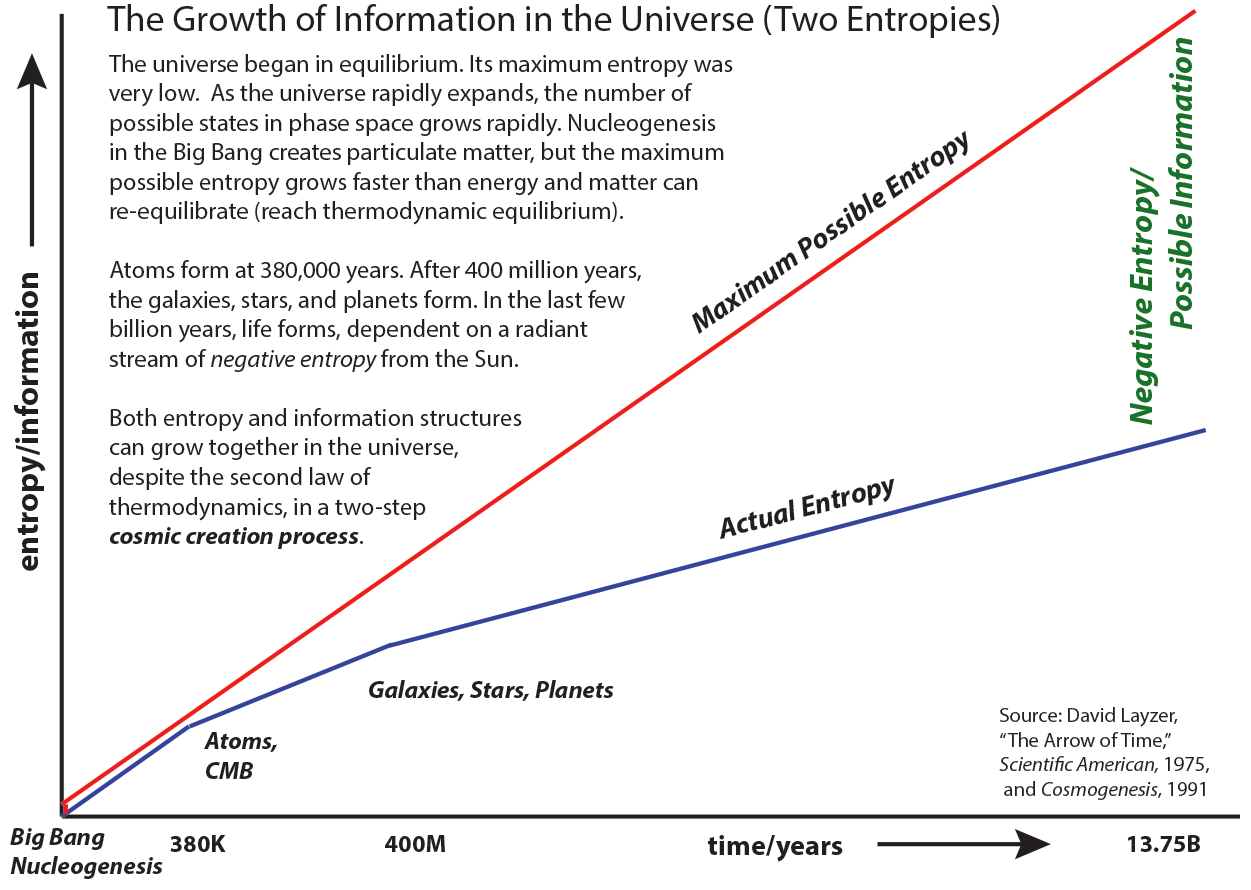The Evolution and Development of Goodness
by Cosmic Natural Selection
At the beginnings of philosophy, Plato defined
the Good as a
Form, as an
Idea. He said the Good is not something "visible," something that can be seen by the Eye.
For Plato, the Good is seen by the Mind, by what he called nous (νοῦς). God, the imagined source of the Good, is also an Idea, something
intelligible to the Mind, not
visible to the Eye.
In modern religions, such transcendent, incorporeal entities are said to be
spiritual, concerns of the
immaterial soul. Many believers look for
meaning or
purpose in their lives in that spiritual realm that is thought to be spatially
above and temporally
before the physical world.
They are understandably inspired to feel a reverence, a thankfulness, toward this providence, this gift of
Life. We suggest this
reverence should be simply directed toward Life Itself.
Information philosophy has identified the process that produces cosmic Order out of Chaos as the source of a
material Good that is in turn the source of
Life in our terrestrial
Biosphere.
Erwin Schrödinger told us that Life "feeds on negative entropy" from the Sun, but he did not know how such a star could form. We can trace the Sun's generation of
free energy to that one cosmic process.
Our
Cosmic Creation Process proceeds by
two distinct stages or steps.
The first stage is the random creation of
alternative possibilities.
The second is the
adequately determined selection of one possibilitiy to become
actual.
These two stages or steps explain
1) The
Emergence of Order out of Chaos,
2)
Charles Darwin's theory of Variation and Natural Selection,
3)
Freedom of the Human Will, and
4)
Claude Shannon's theory of the communication of
information.
The universe began 13.7 billion years ago in a state of thermal equilibrium (chaos) at an extremely high temperature and density and with maximum entropy or disorder.
The second law of thermodynamics says that the entropy of a closed system can only increase (the
Arrow of Time).
Following a suggestion by the English scientist
Arthur Stanley Eddington, Harvard cosmologist
David Layzer explained how both global positive entropy and local pockets of negative entropy could be increasing at the same time. The cause? - the expansion of the universe!
In his 1990 book
Cosmogenesis: The Growth of Order in the universe, Layzer argued that the increase of actual entropy was slower than the growth of maximum possible entropy, providing room for the growth of negative entropy,
free energy. and material information structures.

Although before
life was created, there were no "agents" with "purposes" or "goals" and no "conscious minds," there was objective
value in the universe before the existence of life!
It was the creation for nine billion years of negative entropy and
free energy, most critically their flow from the Sun to the Earth (as Schrödinger told us) which would eventually support the evolution and development of life in our
biosphere, our true "home in the universe."
And for most of those billion years there were
meaningful information structures, from atoms and molecules to planets, stars, and galaxies. There were just no living beings in the
abiotic universe to observe them, to learn and know about them, and to appreciate their
meaning.
's theory that black holes are giving birth to multiple baby universes.
In Smolin's theory a collapsing black hole causes the emergence of a new universe on the "other side", whose fundamental constant parameters (masses of elementary particles, Planck constant, elementary charge, and so forth) may differ slightly from those of the universe where the black hole collapsed. Each universe thus gives rise to as many new universes as it has black holes. The theory contains the evolutionary ideas of "variation" and "natural selection" of universes, and so is formally analogous to models of population biology.
, so we can say that such universes can never be observed and never studied by scientists on Earth in this universe. Such hypothetical universes are the largest violation of the conservation laws for matter and energy and
are science fiction, not science.